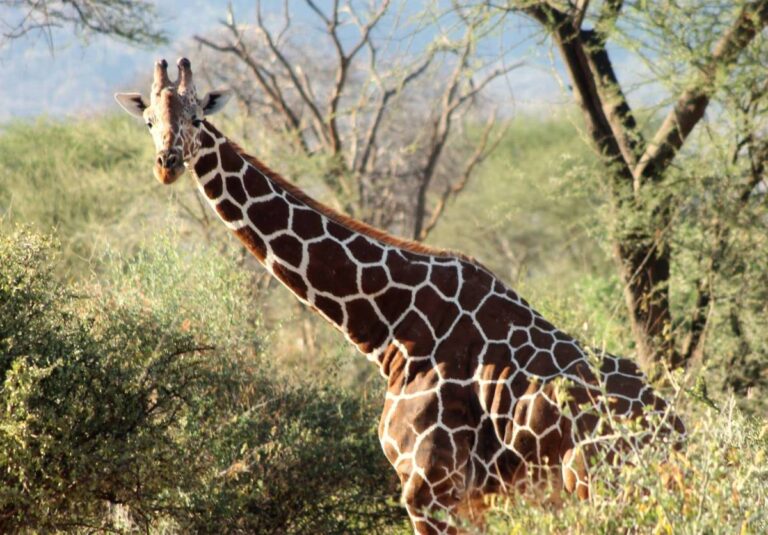
Our tours that include the Samburu National Reserve are perfect for elephant lovers, elephant foster
parents & ‘would-be supporters’ of the Sheldrick Wildlife Trust and the Reteti Elephant Sanctuary.
You will experience visiting the Giraffe Centre and the Sheldrick Wildlife Trust’s Elephant Orphanage in Nairobi on an exclusive private basis mingling with the ‘nursery orphan herd’ while chatting with their Head Keeper.
You will then transfer to the Sheldrick Wildlife Trust’s Reintegration Units in Tsavo whilst staying at the SWT’s private Eco-Camps; Ithumba Camp or Ithumba Hill Camp, Galdessa Camp in Voi (on selected tours only) and Umani Springs. Here you will learn more about the ‘Orphans Project’ and experience being ‘up close & personal’ with the orphaned elephants and their Keepers, often accompanied by ex-orphans and wild elephants.
Following this, you will fly directly on to the Samburu National Reserve for a traditional-style
wildlife safari. Spend these days game-viewing in the reserve and searching for rare game only found north of the equator plus a visit to the Reteti Elephant Sanctuary, the first community owned elephant orphanage in Africa, located in Namunyak Wildlife Conservancy in Samburu County, northern Kenya.
Samburu is a 165 km2 (63 mi2) game reserve situated 350 km (217 mi) north of Nairobi at an altitude of 800 to 1,230m (2,625 – 4,000 ft). At the heart of the reserve, flowing through doum palm groves and thick riverine forest, is the picturesque Ewaso Nyiro River, without whose waters the game could not survive in this arid region.
Samburu is home to one of Kenya’s largest elephant populations and several well-known research projects on carnivores, lions, and Save the Elephants. Four of the Big Five can be found and, though rhino are no longer present, it is considered an excellent place to look for leopard, lion, and elephant. The game reserve sits in the shadow of the sacred mountain Ol Doinyo Sabachae and is home to the Nilotic Samburu people. The Samburu tribe are known for their nomadic pastoralist lifestyle, much like their relatives the Maasai, as well as their glamorous beadwork and colourful shukas.
Samburu National Reserve Kenya can be visited year-round, but wildlife watching is usually best in the dry months from June to September and January to February. The daytime temperature is usually in the region of 32°C/90°F, while the average at nighttime is 15°C/59°F.
If you want to know what to pack for your trip to Kenya we’ve put together a list of essential items to help you out.
Depart for Ithumba Hill Camp run by the Sheldrick Wildlife Trust and located in the remote northern area of Tsavo East National Park. Later visit the Ithumba Reintegration Unit & meet the Orphans.